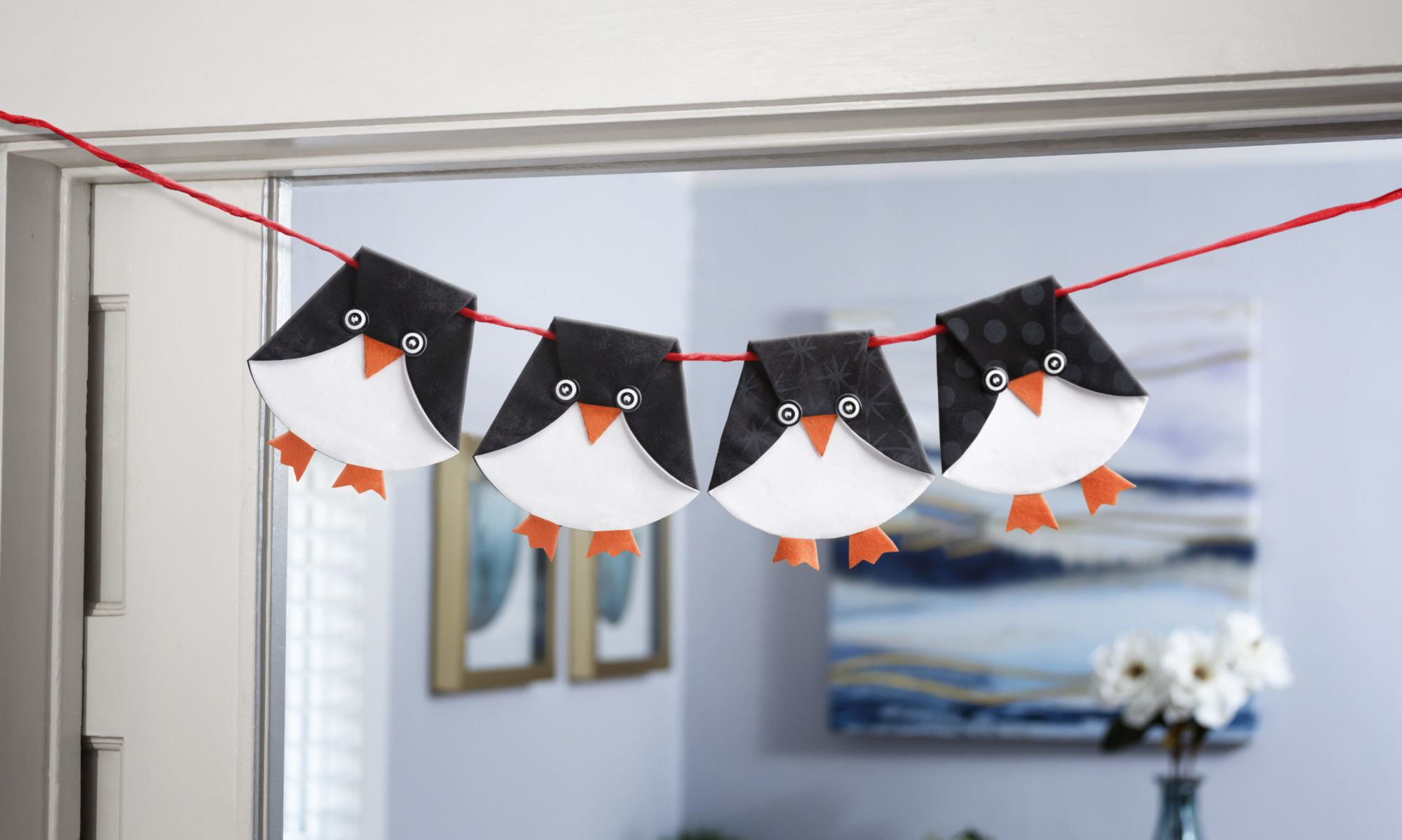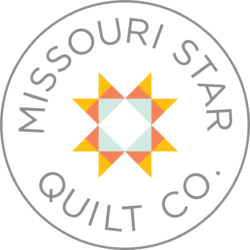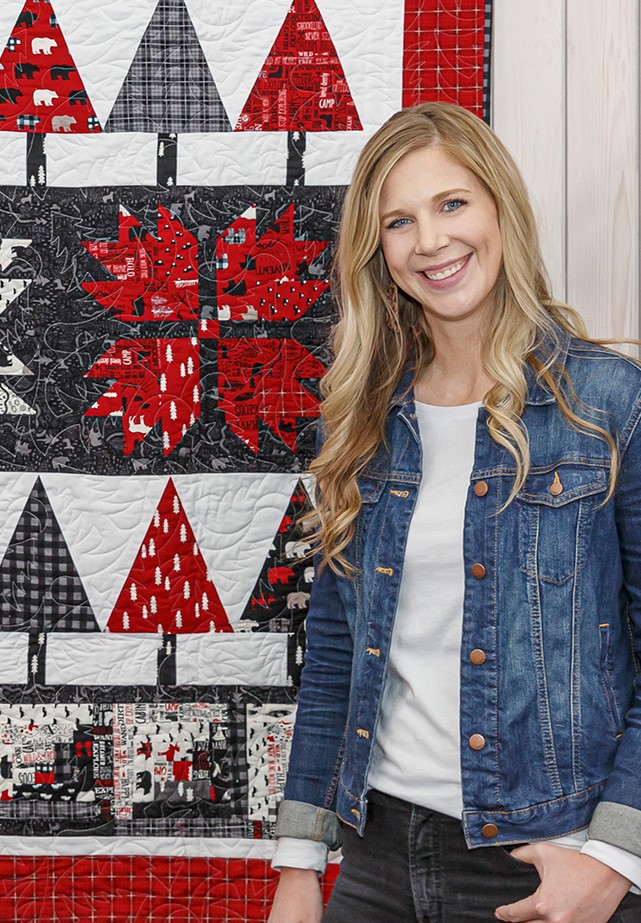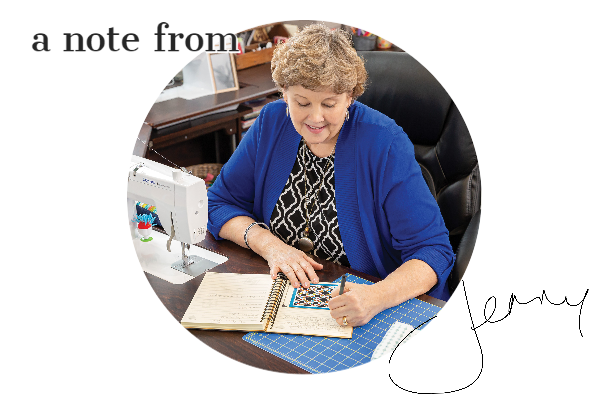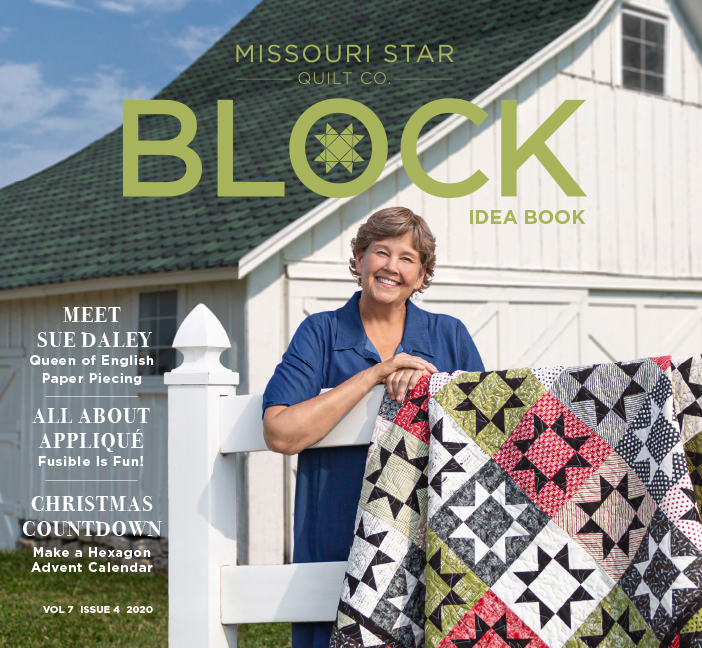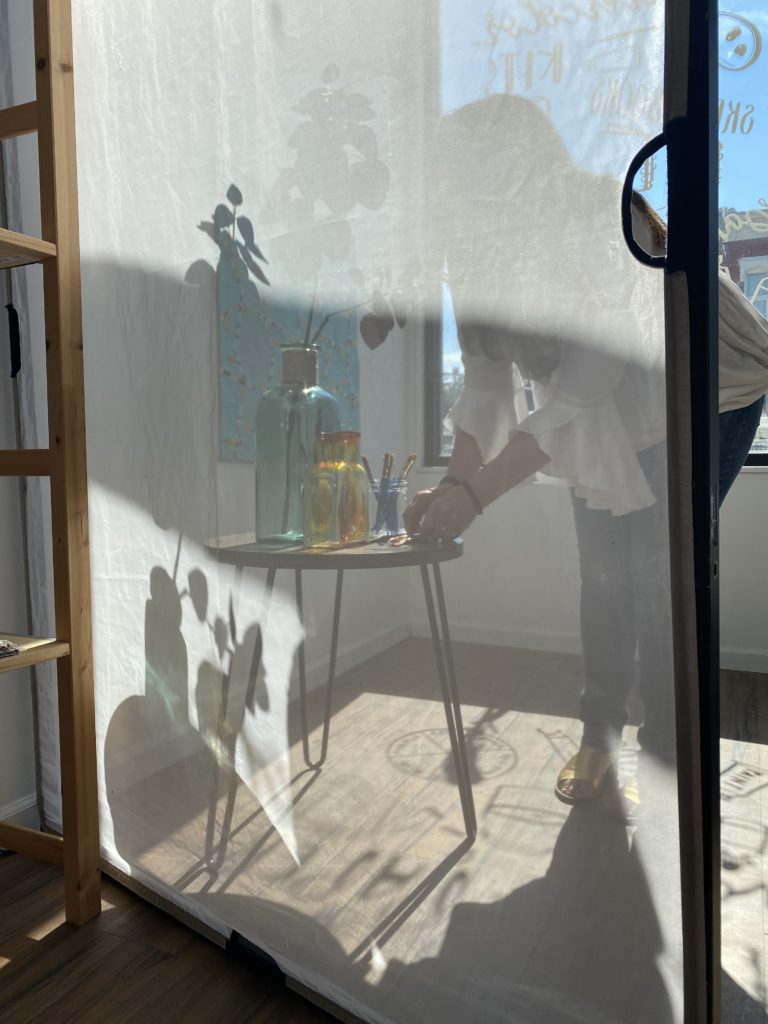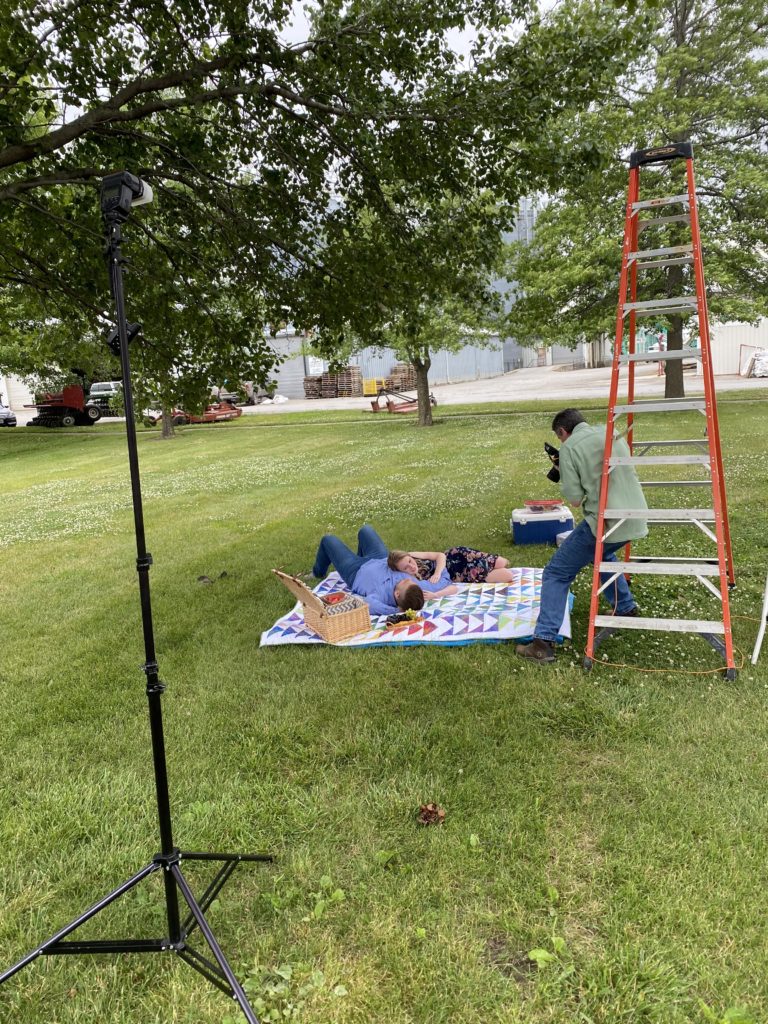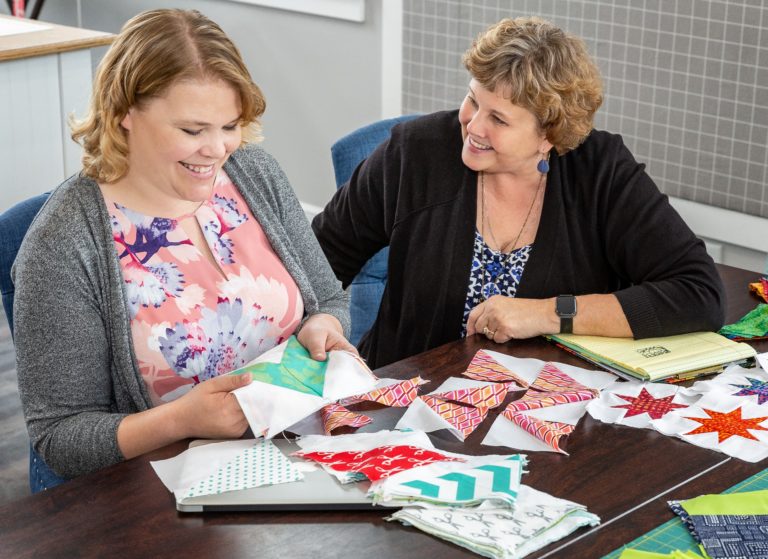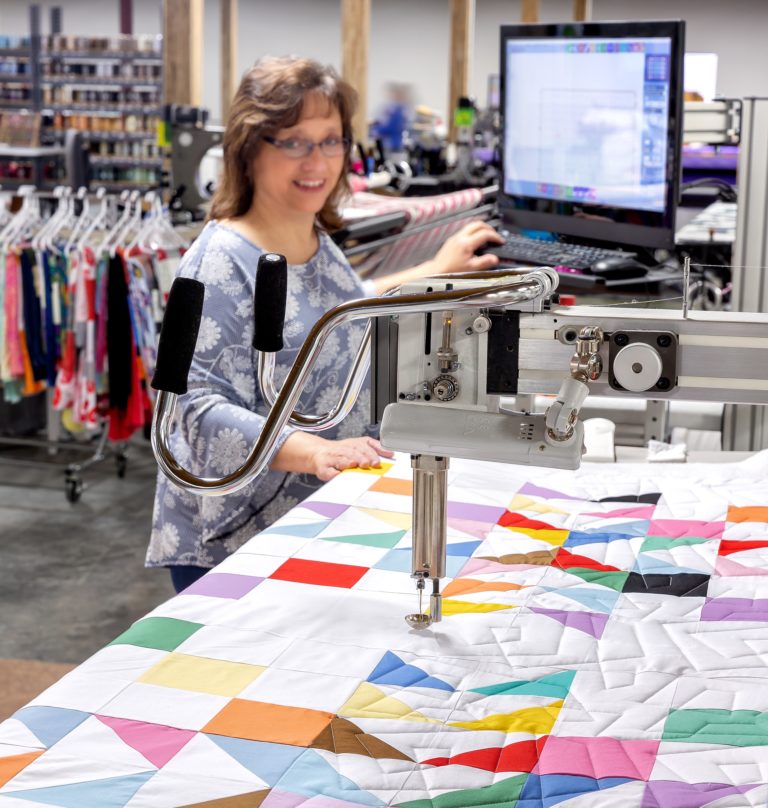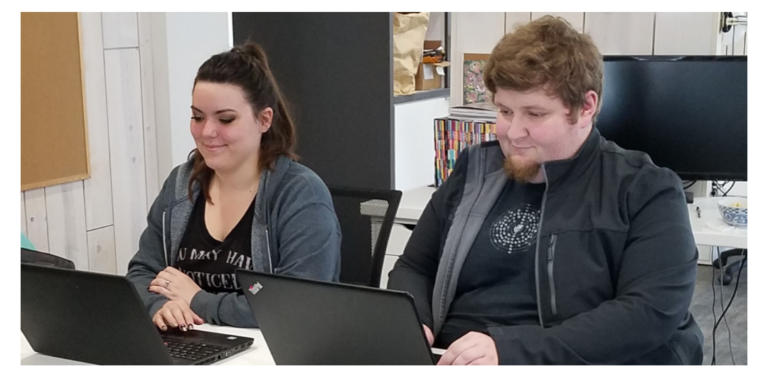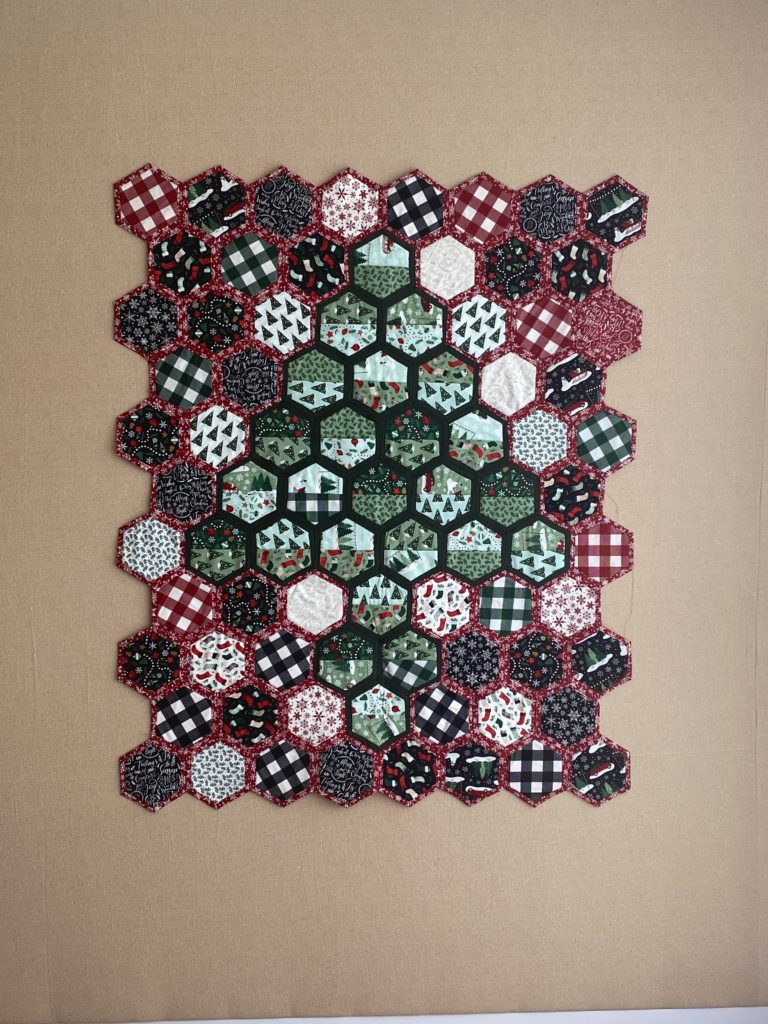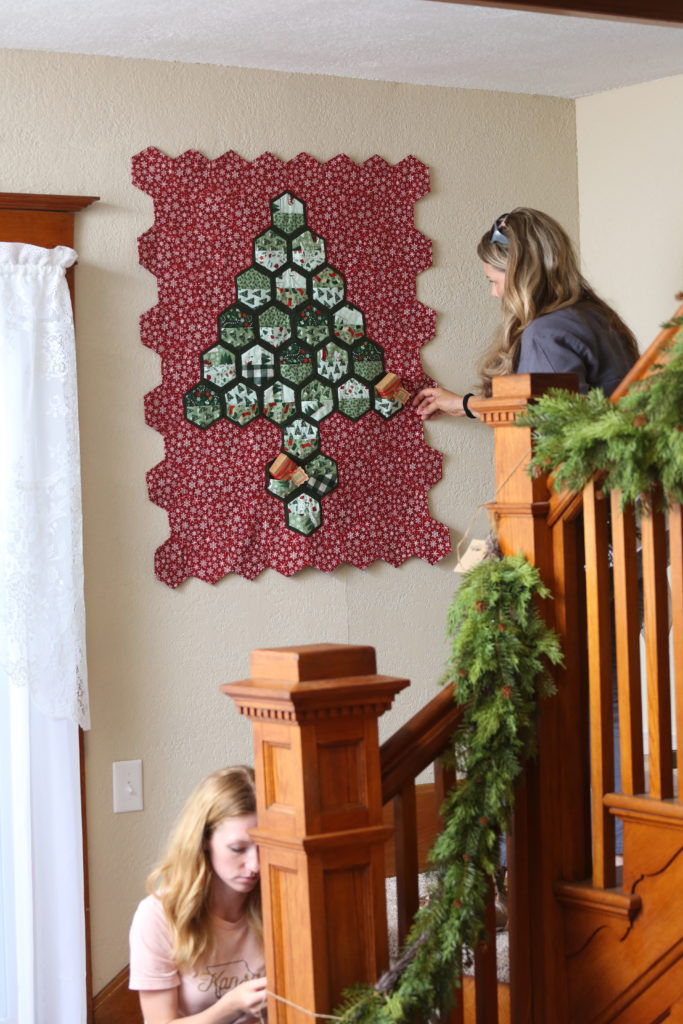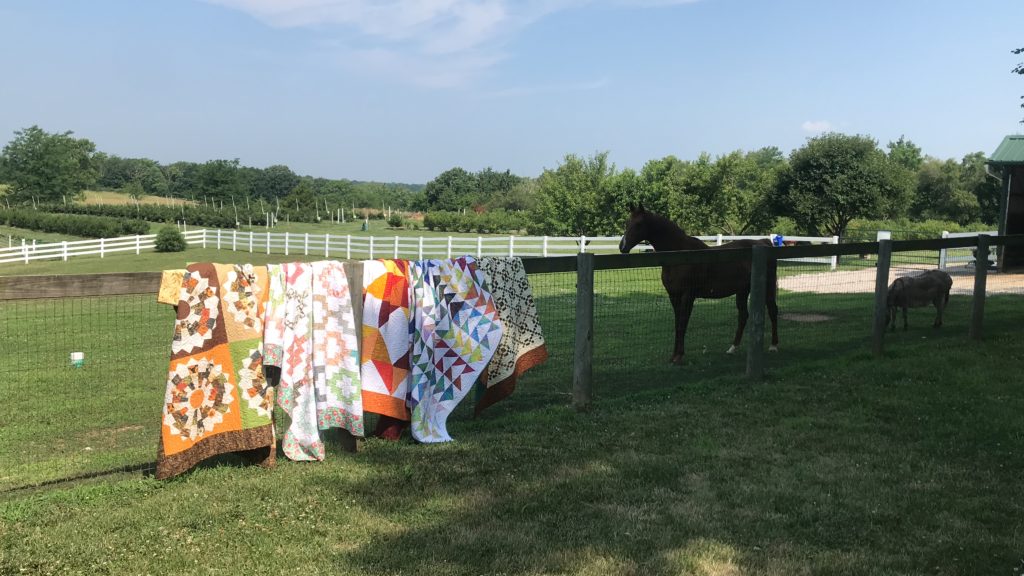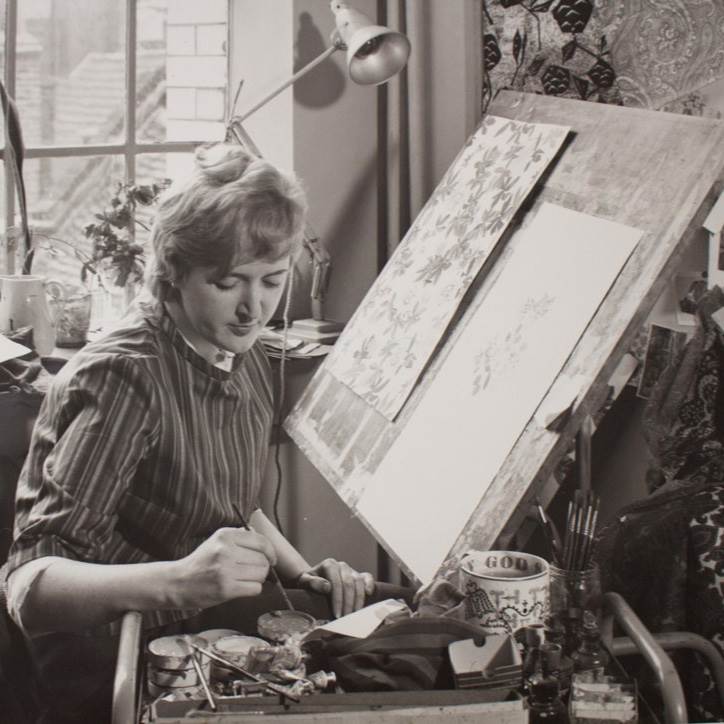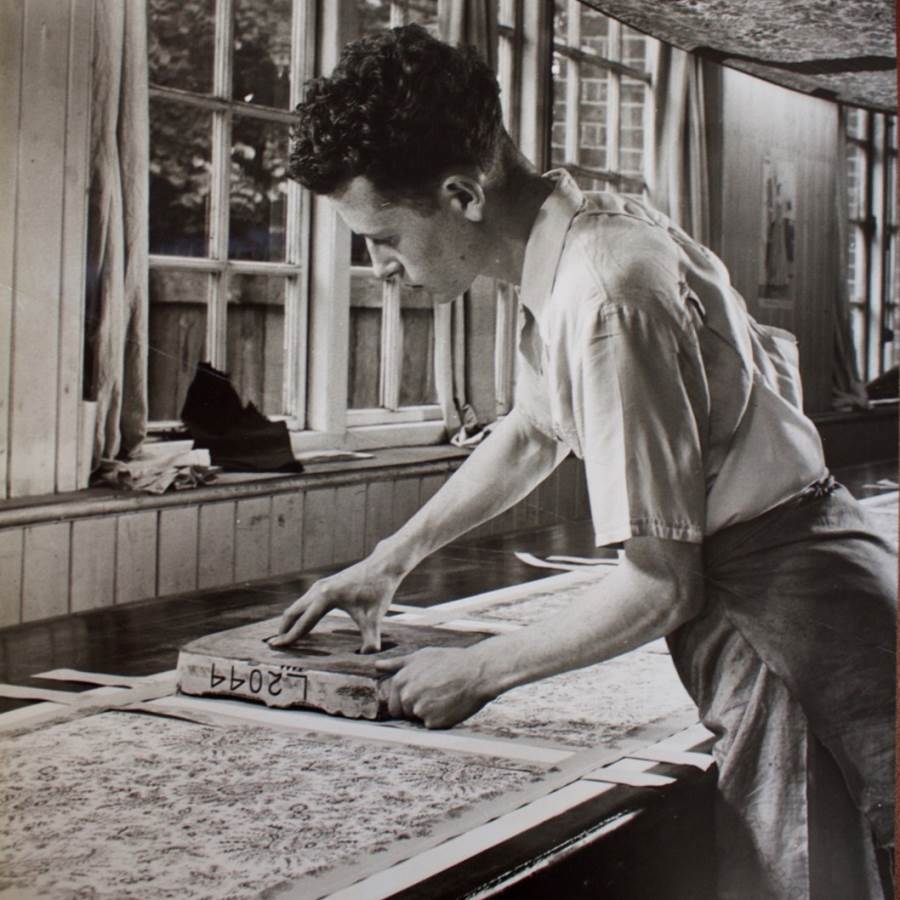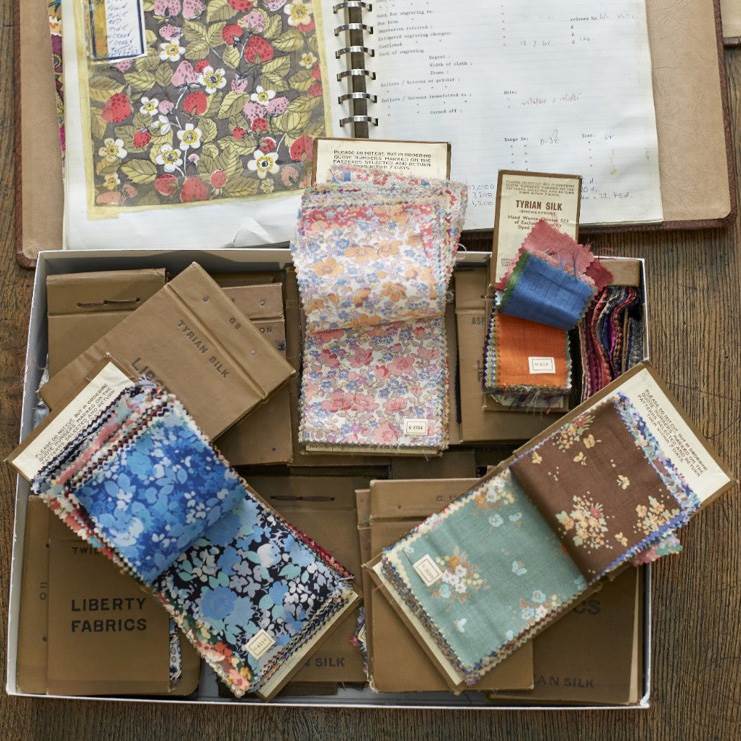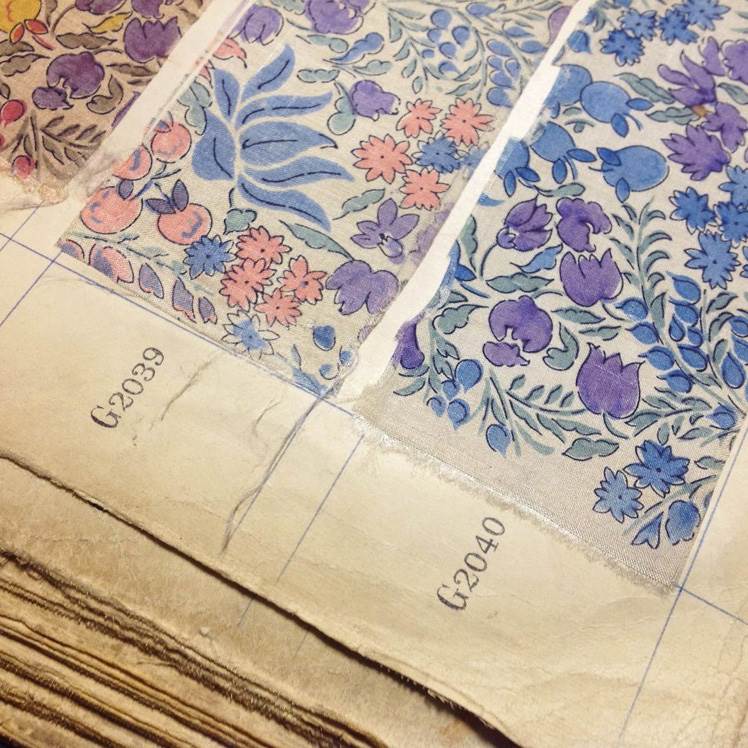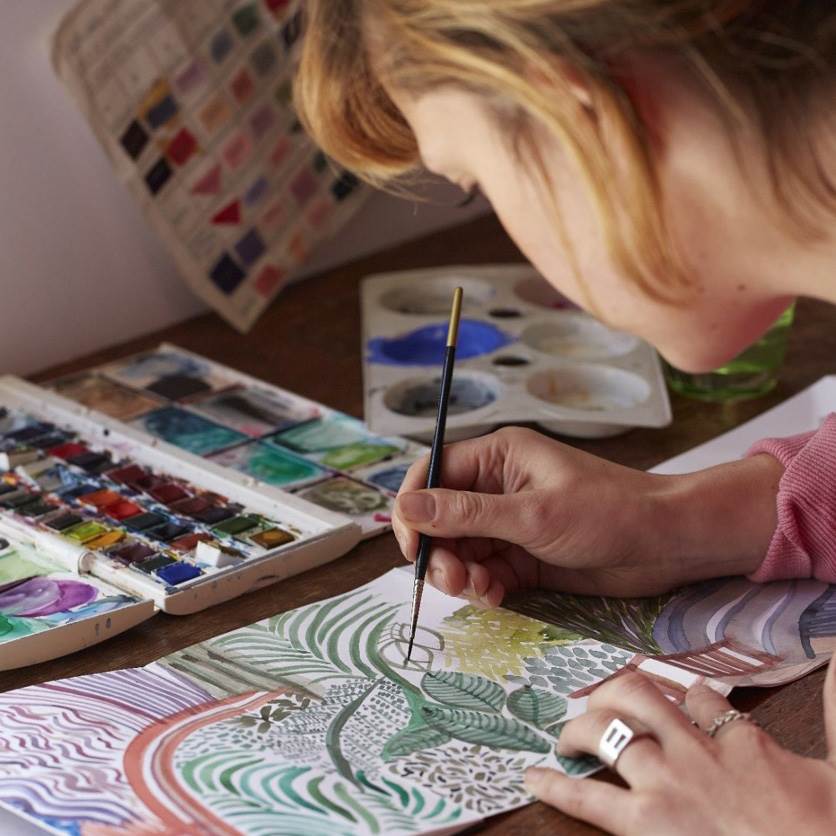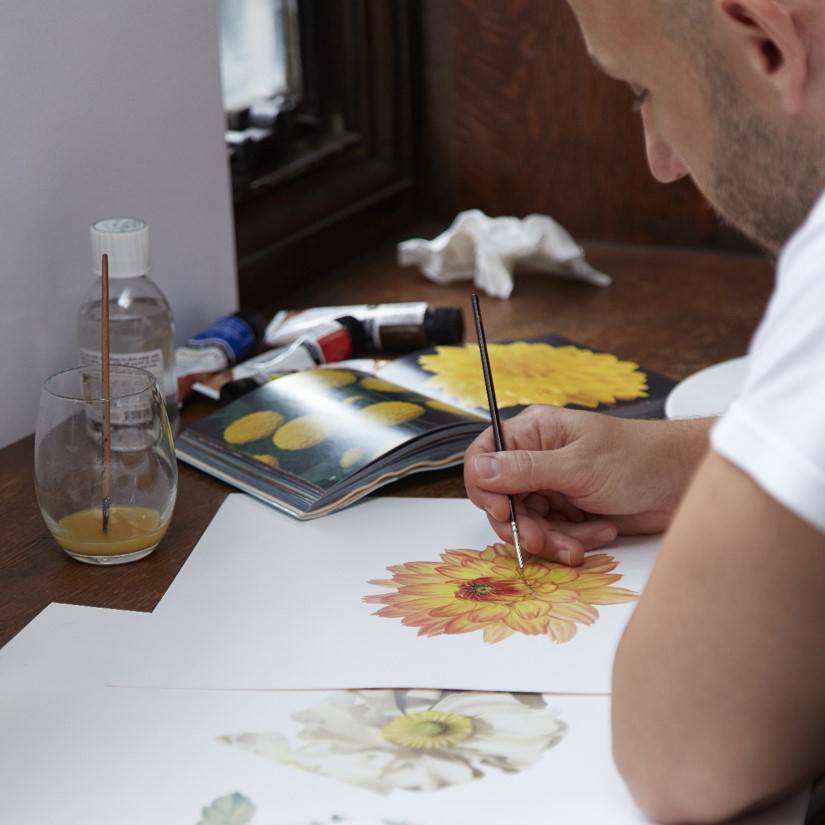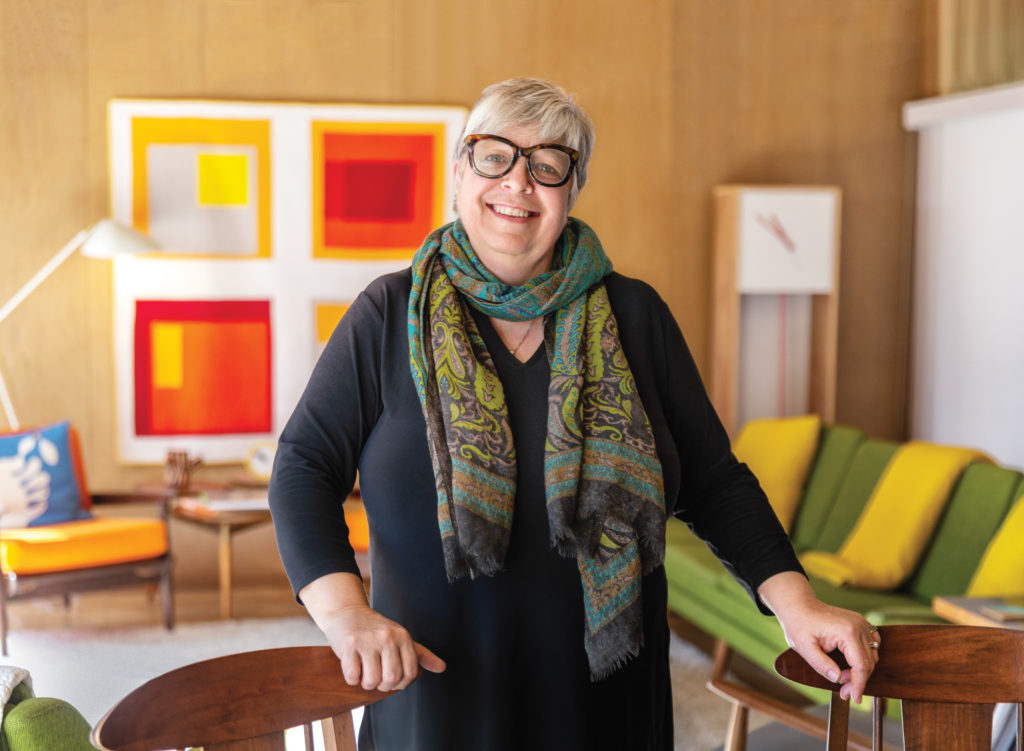
Meet Jacquie Gering, a modern textile artist based out of Prairie Village, Kansas. She began quilting in 2009 and her quilting style has evolved from first exploring traditional quilting to settling into her own way of creating that encompasses a modern, minimalist style that she works through today.
We had an opportunity to ask Jacquie a few questions ahead of her special appearance on BLOCK Party on Thursday, March 18. Keep reading to get to know Jacquie, from her favorite tools to her history of sewing, and join us on Thursday to see her in action!
What is your favorite part of the quilting process?
Design is my favorite part of making a quilt, but design is a key component in almost every facet of making a quilt: creating the pieced design, choosing color and fabrics, choosing a quilting design and even that final design choice of picking the right binding or deciding to use facing rather than binding.
Who are your favorite fabric designers?
I don’t really have many favorite fabric designers since I use almost exclusively solid fabrics when I make my work. The one shelf of prints I do have is filled with fabrics designed by Yoshiko Jinzenji. Her prints are unique in the fabric world. They are sparse yet graphic and they have always intrigued me. I’ve been purchasing them since I started quilting in 2009, but it’s taken me years to figure out how her prints integrate with my aesthetic and how to use them effectively in my quilts.
What notion or sewing tool are you most dependent on?
The one tool that I couldn’t do without is my sewing machines. They are the workhorses in my studio. I have a Brother Nouvelle 1500s which is a semi-industrial straight stitch machine that I use pretty much exclusively for piecing. It’s a beast. It sews fast with beautiful stitches and it never needs to go to the shop. It is simple to operate and to care for, yet it has the features that I require for good piecing: presser foot pressure adjustment, needle down, thread cutter, multiple feed dog settings and a knee lift. I love that it’s fast. My other machine is a Bernina 820 and it is always set up for quilting. I bought that machine so that I could quilt my own quilts. It has a large harp space to support quilting large quilts and it is sunk into the table so that my quilts are well supported when I quilt. It does more than it needs to for me and because of the level of complexity of the electronics it’s fussier than my Brother, but I take pristine care of it and have learned it inside and out and what it takes to make it work for what I need it to do. Both my machines are covered when not in use and they are cleaned and oiled regularly to keep them in tiptop shape.
How were you introduced to sewing and quilting?
The women in my family introduced me to sewing. They were all accomplished seamstresses. My mother taught me to sew as a child. She was my 4-H leader and tried her best to teach me the sewing skills she thought I might need. I was pretty much a failure in her eyes. I didn’t love sewing or making my own clothes and accessories though as the obedient daughter I did. I wasn’t very good at it and since I didn’t love it I abandoned it as soon as I could buy my own wardrobe. The women in my family quilted as well, but I didn’t really see it as interesting or special so I didn’t learn to quilt from them. I discovered quilting much later in life through the art world. I stumbled onto quilting after seeing the Gee’s Bend exhibit. I found those quilts intriguing and so different than the quilts I knew growing up. I bought a sewing machine and dabbled a bit. The timing was serendipitous. Quitting my current job corresponded with my discovery of quilting and on a whim I decided that quilting was the career I wanted to pursue. I fired up Google and taught myself what I wanted (needed) to know and I’ve been learning ever since.
What was the most frustrating sewing project you ever worked on?
I’m not sure I can say. Frustrating is an odd choice of words for me. In fact, I looked it up because something felt weird about it. Frustrated is “feeling or expressing distress or annoyance, especially because of the inability to change or achieve something.” Some pieces challenge me and some are abject failures, but that’s all part of the process. I always feel like change is an option for any piece I make. If something’s not working I change it whether it be design, fabric or technique. Failure is how I learn. Some pieces get started, abandoned and may get resurrected and live in a new form in the future. Some are still in the closet. I may have learned all I can from them at this point.
What do you do to find inspiration/encourage your creativity?
I know that this is a trite thing to say, but inspiration is everywhere; you just need to look for it and recognize it. I get inspiration from design concepts like line or space and concepts like pressure or flow or from events in my own life or in society in general. I consciously teach myself to slow down and notice and to think about, study and explore those things around me. I could have enough design fodder for my entire quilting career simply from exploring the concept of line. Sometimes I’m overwhelmed with too much inspiration and I have to focus and try to sustain myself in one place. I’m a starter and I jump to shiny pieces of inspiration to start new projects rather than finishing or deeply exploring where I currently am working.
What occupation would you like to try if sewing/making wasn’t an option?
If quilting weren’t an option I’d be exploring some other area of art or design. I love designing in my own home. I’m a gal with a power tool and I’m pretty good at paint, drywall, wallpapering and tiling. My husband and I have renovated every home we’ve lived in. We designed and built our own home out in the Kansas countryside. It was so much fun since I got to make every decision that went into that house from designing the placement of the electricity to the kitchen. We’ve moved six times since 2013 and every time I move into a new place I get to play interior designer.
Who is your favorite fictional character?
Cookie Monster is my favorite fictional character. Cookie Monster lives his passion. I admire that. He’s also curious and asks questions when he doesn’t understand. He’s the opposite of a know it all. He’s also a great example of what’s on the outside is not necessarily what’s on the inside.
What fabric have you been hoarding the longest?
I don’t hoard fabric. I use it. Nothing that I own is so precious that it won’t go in a quilt someday. I do have one piece of fabric from 2015 that I still have that is special. It was a piece of Yoshiko Jinzenji fabric that I bought at QuiltCon and she signed it for me. Of the few yards of that print that I purchased I have about 8″ left and that 8″ has her signature. I should probably frame it for my studio. When I first started quilting I didn’t have any idea how to buy fabric or what to buy so if I saw it and liked it, I bought it. I made loads of buying mistakes those first few years and ended up with fabric that I didn’t want to use. As I figured out who I was as a quilter, I set about reducing my stash and developing a more curated collection of fabrics. I don’t have a gigantic stash any more. Too much fabric overwhelms me.
Describe your perfect day.
My perfect day would be spent with my husband in New York City. We love the energy, diversity, and opportunities of the city. I’m sure it would be spent with time at the MOMA or Guggenheim or some other museum, music or dance venue with time to explore and walk a neighborhood or read a book in the park with a good dose of people watching and of course there would be coffee, a great bottle of wine, friends and food, delicious food.
We can’t wait to have Jacquie join us on Thursday, March 18th at 6:00 pm cst for our BLOCK Party!
You can keep up with Jacquie by following her on Instagram and Facebook. Don’t forget to swing by her website, www.jacquiegering.com, and blog, too!
